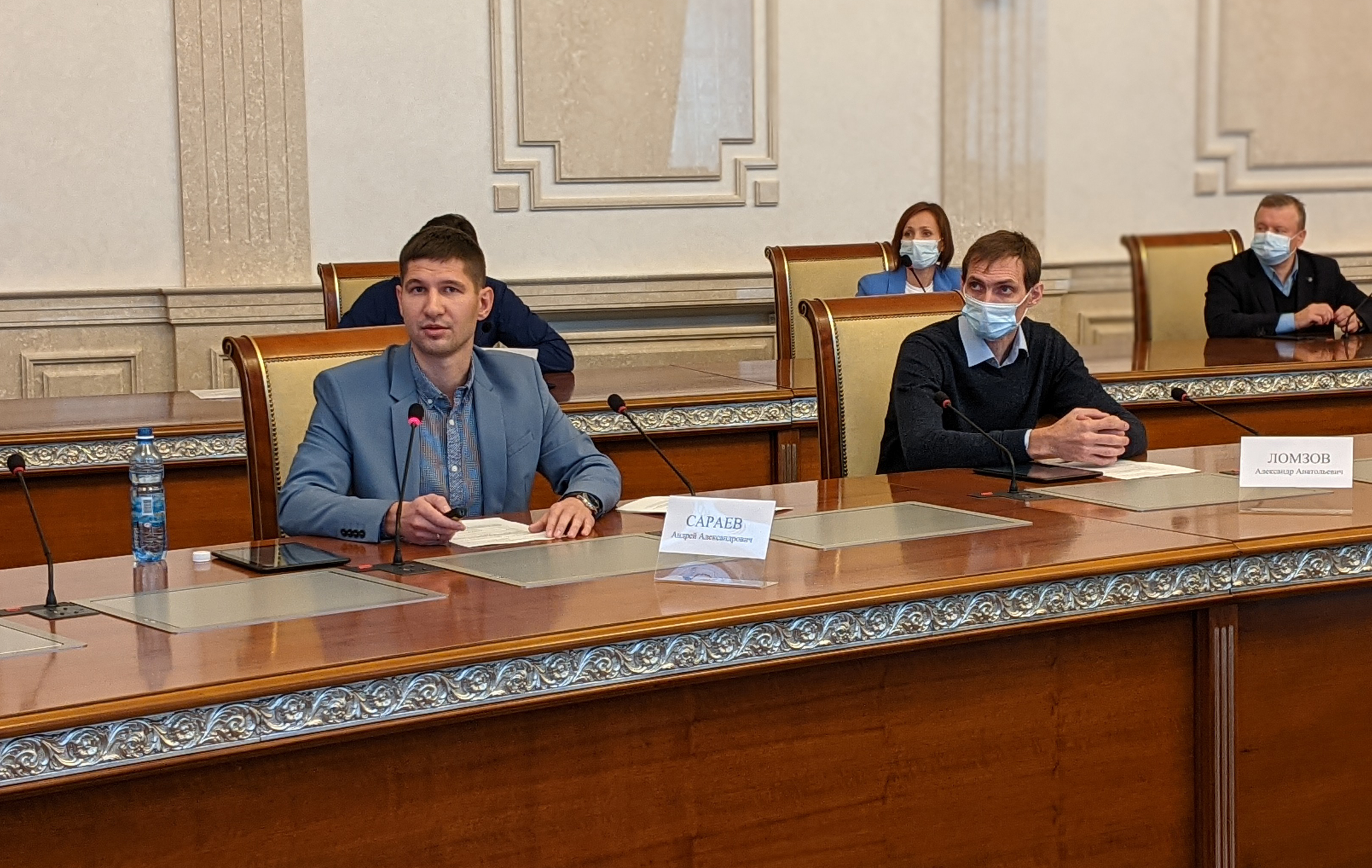
Phone: +7 (383) 330-67-71, Fax: +7 (383) 330-80-56, E-mail: bic@catalysis.ru
5 Lavrentiev Ave., 630090, Novosibirsk, Russia

Phone: +7 (383) 330-67-71, Fax: +7 (383) 330-80-56, E-mail: bic@catalysis.ru
5 Lavrentiev Ave., 630090, Novosibirsk, Russia
18 October 2021
Shared Research Facility “Siberian Circular Photon Source” of Boreskov Institute of Catalysis that is being built now in Koltsovo will host the studies necessary for making new highly efficient catalysts, fuel elements, batteries, high-temperature conductors, artificial proteins (pharmaceuticals) and other functional materials. Andrey Saraev, coordinator of the development and establishment of the SKIF beamline “XAFS-spectroscopy”, spoke about the SKIF capacities in this area at the meeting of the Council of young scientists and specialists of the Government of Novosibirsk region.

“It is the structure that in the majority of cases determines what properties a material would feature. For example, carbon exists in nature in various states: coal, graphite, diamond, or graphene. Each of these substances has its own structure and properties, as you know. Graphite is a soft foliated material, while diamond, on the contrary, is very hard. Graphene is a promising material for electronics. To control the properties of a material it is necessary to study its structure”, noted the researcher.
The laboratory instruments cannot always give the necessary information on the materials structure, and some methods cannot be realized in laboratory at all. They require the sources of synchrotron radiation (SR), and only with their help the objects can be studies at the atomic level.
“Such unique mega-science facilities as SKIF have a wide range of physicochemical methods and provide a great scope of information. As a result the scientists can tune and synthesize materials to fit various tasks. For example, these could be catalysts for fine organic synthesis, catalysts for selective oxidation of alcohols into valuable organic compounds, for example, into methyl formate, formaldehyde, formic acid. The substances of high cost, they are used in pharmacology, paint and coating industry and perfume manufacturing, as well as the additives to diesel and petroleum and for many other purposes”, said Andrey Saraev.
The synchrotron studies are very much in demand in science: about 15 thousand papers are printed annually that publish the results obtained with the use of synchrotron radiation. The objects of the studying can be not only the functional materials but also viruses, living organisms, archaeological findings, etc.
The researchers who would come to SKIF will be able to conduct the experiments with the use of various methods depending on the task. This could be nano-, micro-, or macrolevel.
“Besides, today science demands studying objects not only in their stable state but also in the process of their real functioning. For this there will be studies in the in situ and operando modes on SKIF. That is, the parameters of the experiments will vary (temperature, pressure, some gas supply) to model the real conditions, and as a result it would be possible, for example, to measure the reaction rate, selectivity by products, as well as other parameters. For instance, it is important in synthesis of catalysts – substances that are used in chemical industry for controlling the rate of reaction”, told Andrey Saraev.
Among the global challenges for today’s science Andrey Saraev named synthesis of hydrogen from organic substances (glycerin, alcohols), photocatalytic transformation of CO2 into valuable organic products (methane, synthes-gas, methanol), purification of the wastes of industrial enterprises (flue gases, slimes, petrochemical wastes), reclamation of landfill sites, making of new fuel elements and new types of electric batteries. To solve these problems the functional materials are needed, and their controlled making is impossible without the synchrotron studies.
High demand for such studies and limited capacity (there are two SR sources in Russia of generations 1 and 2) result in high competition for the experimental time on the SR sources abroad, where the priority is given to their national researchers. Thus, the beginning of operation of SKIF would give the possibility to conduct studies at the top level and in the right quantities to the Russian scientists.
Info: Shared Research Facility “Siberian Circular Photon Source” of Boreskov Institute of Catalysis is a mega-science project with synchrotron of 4+ generation that is being constructed in Koltsovo, science town in Novosibirsk region. The unique characteristics of the new synchrotron will allow conducting the cutting-edge studies with bright and intensive beams of X-ray radiation in many areas – chemistry, physics, materials science, biology, geology, the humanities. Also SKIF would help to solve the important problems of innovative and industrial enterprises.
Aleksandra Malygina, press-secretary of SRF “SKIF”